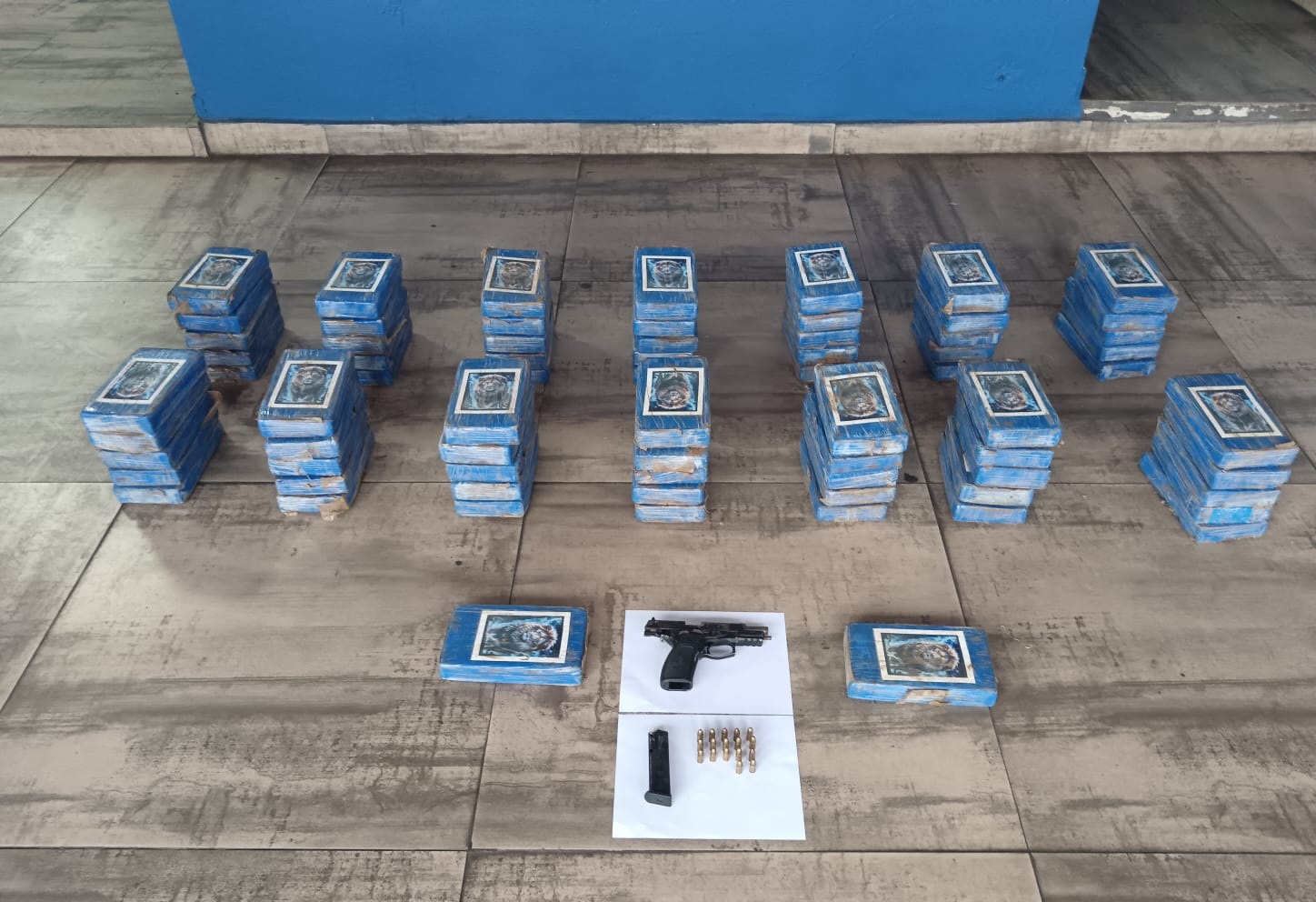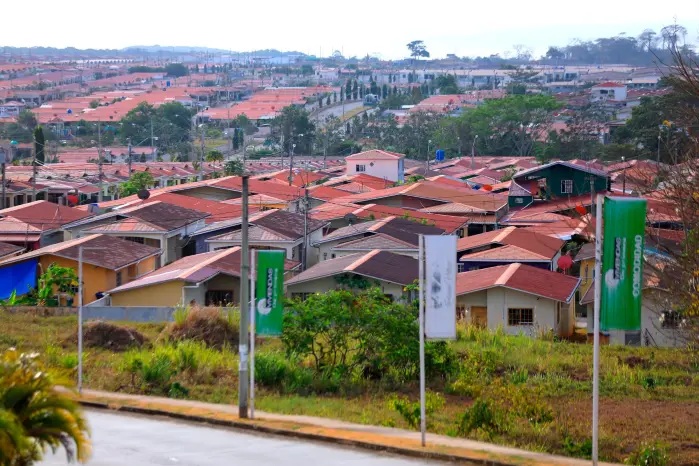Witch doctors, unexplored sacred caves and flying devils

Caving is not for the unfit traveler and, with added complications like sacred sites occupied by flying devils, not for the faint of heart.
James S. Cobbett, a British born geologist living in Panama, and a long time explorer and discoverer of caves in Panama presents an enthralling report of a recent caving expedition in the Darien jungle

Though a number of caves have been explored elsewhere in Panama it had previously been thought that the north Darien region, where the Kuna Yala Indian “Comarca” is located, featured only igneous rocks, with a thin covering of recent sediments.
However, a chance meeting with staff of the Smithsonian Tropical Research Institution, in 2008, suggested that something more interesting might lie beneath the surface.
A group of Smithsonian geologists had visited the village of Ailigandi, on an island in Kuna Yala, where they had been told of a cave up the Ailigandi River, which has a second entrance by the sea. However, in order to ward off evil spirits, they would first have to endure a ritual purification process, which involved inhaling smoke from burning cocoa leaves. As time was pressing, and Ailigandi is far from home, the Smithsonian geologists did not follow this up.
I first visited the Ailigandi area in 2005, when we sailed Flying Scud back from Colombia to Panama, passing through San Blas on the way.
The San Blas Islands, off the Caribbean coast of Darien, are arguably the World’s most beautiful and unspoilt cruising ground, and we have been back most years since. The Kuna Indians mainly live in over-crowded islands, like Ailigandi, near to the mainland, which they visit every morning in their dugout canoes to tend their crops. A few families also live on the idyllic islands further offshore, where they cultivate coconuts, which, until recently, were used as money. As a regular visitor to the area, and a caver, what else could I do but check out this lead?
However, by 2011 when I got a posse together, including Roger Day, Pat and Pauline Cronin, Dig Hastilow, Marilyn Cobbett and myself, we had been told of another cave near Ustupu, another island a little beyond Ailigandi, and this was to be our first port of call – literally; it takes us almost a week to get down here from the marina on the Caribbean end of the Panama Canal.
Here, our local contact was to be a traditional healer, “botanico” in Spanish, or “Witch Doctor” in English.
A SACRED SITE
We eventually found the Witch Doctor’s grass hut, filled with seemingly over a dozen small and mainly naked children, and maybe four of their mothers. Using Marilyn as a translator, we established that he was expecting us, and that there was a big cave in the hills on the mainland. However, “The Witch Doctor’s Cave” is a site sacred to the Kunas, so we first had to get permission from the Sahila, the local Chief.
Later in the day, accompanied by the Witch Doctor and the Witch Doctor’s Assistant, we visited the Sahila in his hammock in the Congreso Hut. He told us that he would have to discuss this at that evening’s congress and only then would he make his decision.
The next morning, we went early to pick up the Witch Doctor as he had told us that all would be well – but it was not, and we would have to meet the Sahila again later in the day, before permission would be given. This meeting did not take place till past noon, by which time we were getting concerned about the time. The Sahila explained that the mountain, and the cave, were sacred sites for the Kuna, considered to be the source of all life, as shown by the presence of turtle bones so far from the sea (maybe left by pre-historic cave dwellers?). He was concerned that if the site were to be disturbed, then an “epidemic or some other disaster” might engulf the Kunas. Also there are precious stones, silver and other treasures in the cave, not to mention the small matter of a “very large devil”, which flies out at seven every evening emitting a distinctive whistling noise! Money changed hands, and we got our permission, but as it was already after-noon we queried whether it was now too late to make the visit. Both the Sahila and the Witch Doctor insisted that there was plenty of time left, so we went back to Flying Scud to get our kit.
 At two, Roger, Pat, Dig and myself set off in my inflatable, following the Witch Doctor in his dugout canoe, but without his Assistant, who had not been seen since learning that we were to go to the cave. However, his trainee, aka the “Witch Doctor’s Apprentice”, was with him, complete with an antique and dangerous-looking rifle, but with little enthusiasm for the whole enterprise.
At two, Roger, Pat, Dig and myself set off in my inflatable, following the Witch Doctor in his dugout canoe, but without his Assistant, who had not been seen since learning that we were to go to the cave. However, his trainee, aka the “Witch Doctor’s Apprentice”, was with him, complete with an antique and dangerous-looking rifle, but with little enthusiasm for the whole enterprise.
Up the river, past the Kuna cemetery, we left the boats at the start of an obvious track, which follows the main water supply pipe for the town. As we got higher, the track got worse, and in places we had to by-pass recent land-slips where the track had been destroyed. We were still far from the cave by five, and the devil flies at seven, by which time it would be long dark. The Witch Doctor was looking scared, and, in spite of his gun, his Apprentice’s teeth were rattling so badly that he could not even speak!
This left us with no real choice but to turn back, at which point the Witch Doctor’s Apprentice turned and ran. The rest of us made a more orderly retreat. Part way down, the Witch Doctor picked up what looked like a piece of black wood from the ground and gave it to Dig, with the comment “Kuna Viagra, three days!”, accompanied by a gesture “for all the World like a baby’s arm raised in anger”, as they say in the classics.
We eventually found the Witch Doctor’s Apprentice waiting for us, in the near-dark, by the boats. He redeemed himself somewhat by showing some small, limestone karst caves near the river, before we made our way back to Ustupu and Flying Scud, arriving by torch-light in the dark.
The general consensus, especially that of “management”, was that we had had enough fun for now, so to leave any return to the Witch Doctor’s cave to another time.
RETURN VISIT
In 2012, Roger and Rita Day, Marilyn and I returned to Ustupu and contacted the new Sahila, via a Kuna friend, without involving the Witch Doctor. The new Sahila said that visits to this cave, now reported to contain diamonds, gold and all manner of treasure, were specifically prohibited by Kuna law, and that we never should have been given permission to visit in 2011.
Though, rather like Heaven and Hell, everyone seems to know about this cave, no one can be found who has been there, descriptions are hardly credible, and there are no photographs. I doubt if any of these places really exist, and do not plan to spend more time looking.
On the way back from Ustupu in 2012, we stopped off at Ailigandi, where we met Christopher Lucas, a Kuna who had on his cell phone some very dark photos of a nearby cave and who offered to find us a guide for a visit. The Ailigandi Sahila, considering possible commercial tourism, was happy for us to visit. However, time was then pressing, so the “Ailigandi River Cave” was put on the program for 2013.
In January 2013, Roger Day, Marilyn and Andrew Cobbett and I returned to Ailigandi, where Christopher was waiting for us. He introduced us to the new Sahila, his uncle, who was very happy for us to visit the cave or caves, as two significant caves, one with a second entrance near the sea, were now reported to lie nearby.
 The next morning Christopher collected us from Flying Scud, with two guides and two dugout canoes. After paddling almost one hour up the Ailigandi River, we left the canoes and then followed a wide track along the route of the water supply pipe – most significant Kuna settlements have one of these. After walking a further half hour, all along the flood plain of the river, we turned left into an insignificant track, then across the river, to arrive at the base of a limestone outcrop. Things were looking up!
The next morning Christopher collected us from Flying Scud, with two guides and two dugout canoes. After paddling almost one hour up the Ailigandi River, we left the canoes and then followed a wide track along the route of the water supply pipe – most significant Kuna settlements have one of these. After walking a further half hour, all along the flood plain of the river, we turned left into an insignificant track, then across the river, to arrive at the base of a limestone outcrop. Things were looking up!
Having crossed the outcrop (maybe 60 feet high) we followed, to the right, a track along the jungle floor along the base of the outcrop for a further ten minutes, to some obvious entrances in the escarpment, maybe thirty feet above the jungle floor. (GPS Location 09° 13.320’ North, 78° 03.601’ West.)
THE AILIGANDI RIVER CAVE
Much to the amazement of the Kunas, who had not even considered that we might do such a thing, Roger and I donned our helmets and lights, and went in.
 The Ailigandi River Cave has perhaps as many as eight entrances, leading into linked walking-sized passages, some as much as twelve feet wide and twenty feet high. These are all very dry, long-abandoned passages, with lots of stal and lots of bats. All possible onward and downward extensions are choked with bat droppings, including one twelve foot deep shaft which I descended on electron ladder. From the lack of tracks in the bat droppings, or other signs, it seems unlikely that anyone had explored here before. There were no signs of human, or animal, habitation – apart from bats and insects. The furthest one can get from the cliff face is maybe sixty feet, with perhaps as much as three hundred feet of passage in total.
The Ailigandi River Cave has perhaps as many as eight entrances, leading into linked walking-sized passages, some as much as twelve feet wide and twenty feet high. These are all very dry, long-abandoned passages, with lots of stal and lots of bats. All possible onward and downward extensions are choked with bat droppings, including one twelve foot deep shaft which I descended on electron ladder. From the lack of tracks in the bat droppings, or other signs, it seems unlikely that anyone had explored here before. There were no signs of human, or animal, habitation – apart from bats and insects. The furthest one can get from the cliff face is maybe sixty feet, with perhaps as much as three hundred feet of passage in total.
Though Roger took many photographs, including those shown here (with his permission), we did not make a survey. Roger and I are both qualified for jublilado discounts, so felt justified in leaving such things to younger men, especially in the heat and humidity of the Darien jungle. Our objective

was limited to seeing if there really were any caves here, no more than that.
KUNA JUNGLE GUIDE
We then spent a further two hours looking for “the other cave with two entrances”, which was thought to be nearby.
Though we did search two small limestone outcrops (each say 900 feet long x 300 feet wide x 100 feet high), and saw a number of small (some likely passable) entrances in the cliffs above, we did not find the entrance that one of the guides, Nelson Smith (right), who is a hunter and knows the area well, was looking for. We also saw two, likely passable, stream sinks, but, again, must cite the “jubilado excuse” for not entering them.
We then retraced our steps in time to be drinking iced beer on Flying Scud by early afternoon.
The hunter also told us that, in addition to the nearby “cave with two entrances”, there are bigger limestone escarpments, with more cave entrances, deeper in the jungle, but that visiting these would involve spending several nights, likely camping in jungle hammocks. He will make a point of locating some of these for our next visit.
I am currently considering how best to make a return in 2014. Interested parties may email me at james@jamescobbett.com.





